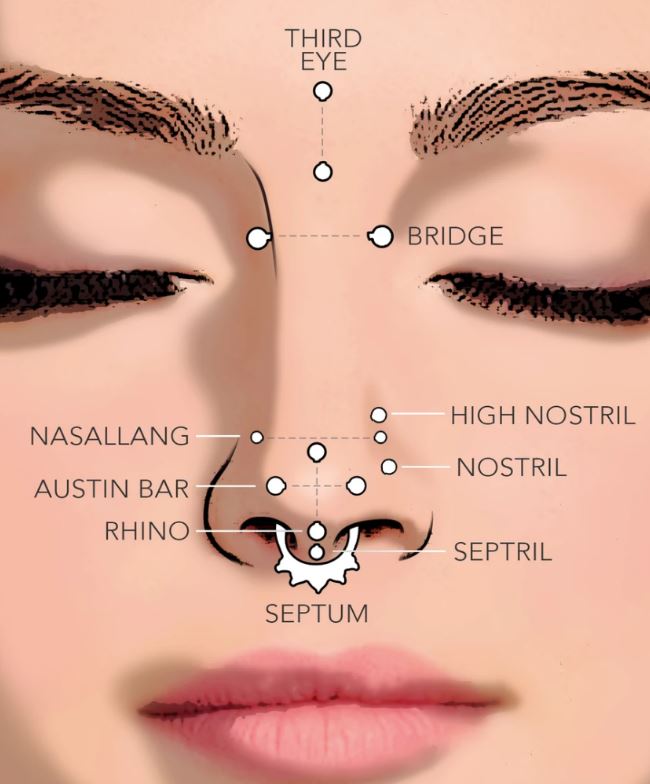Sponsor Ads
Non-China Vape, 510 Cartridges & Battery Device Maker
If you are going for a vape manufacturer out of China we are you best choice. We offer a alternative vape production location with a very competitive price. You can save money by buying directly from us the manufacturer, without any middlemen or extra fees. You can also enjoy discounts for bulk orders and special offers for long term & loyal customers.
We offer small trial orders where you can test the quality and performance of the products before placing a large order. Fast shipping and cheaper shipping cost from Malaysia and Singapore ports. You don't have to wait long to receive your products.
Contact Us!
Contribute for our website Maintenance! We want to keep it free for all visitors.
Trending Best Sellers
Car Insurance Explained YouTube
 Trending Best Sellers
Trending Best Sellers
Below is a list of Car Insurance Explained YouTube. Subscribe to the YouTube Channel for more updates!
Visit our Car Insurance Explained on YouTube Channel Cars, Automobiles, Vehicle
Car insurance also known as vehicle insurance, motor insurance, or auto insurance is insurance for cars, trucks, motorcycles, and other road vehicles. Its primary use is to provide financial protection against physical damage or bodily injury resulting from traffic collisions and against liability that could also arise from incidents in a vehicle. Car insurance may additionally offer financial protection against theft of the vehicle, and against damage to the vehicle sustained from events other than traffic collisions, such as keying, weather or natural disasters, and damage sustained by colliding with stationary objects. The specific terms of vehicle insurance vary with legal regulations in each region.
Common Car Insurance coverages
Comprehensive
Also known as “other than collision,” this coverage can help pay for damage to your vehicle from vandalism, theft, weather events and accidents involving animals.
Collision
Regardless of who’s at fault, collision can pay for damage to your vehicle if you hit another vehicle or object, another vehicle hits you, or your vehicle rolls over.
Gap coverage
Gap insurance may help you cover the “gap” between what you owe on your car and your car’s actual cash value.
Uninsured motorist
If an uninsured or underinsured driver causes an accident that results in property damage and/or bodily injury, uninsured motorist coverage may help pay for damage and medical costs for you and your passenger(s).
Bodily injury liability
If you cause an automobile accident that results in injuries, bodily injury protects you by paying for damages you may become legally liable for as a result of the accident, including medical bills and loss of income for the injured party.
Roadside Assistance
Roadside Assistance coverage may even be available when you and your family household members are passengers in someone else's vehicle, or during a roadside emergency in which your vehicle is disabled.
Car Insurance in USA
Vehicle insurance, car insurance, or auto insurance in the United States and elsewhere, is designed to cover the risk of financial liability or the loss of a motor vehicle that the owner may face if their vehicle is involved in a collision that results in property or physical damage. Most states require a motor vehicle owner to carry some minimum level of liability insurance. States that do not require the vehicle owner to carry car insurance include Virginia, where an uninsured motor vehicle fee may be paid to the state, New Hampshire, and Mississippi, which offers vehicle owners the option to post cash bonds. The privileges and immunities clause of Article IV of the U.S. Constitution protects the rights of citizens in each respective state when traveling to another. A motor vehicle owner typically pays insurers a monthly fee, often called an insurance premium. The insurance premium a motor vehicle owner pays is usually determined by a variety of factors including the type of covered vehicle, marital status, credit score, whether the driver rents or owns a home, the age and gender of any covered drivers, their driving history, and the location where the vehicle is primarily driven and stored. Most insurance companies will increase insurance premium rates based on these factors, and less frequently, offer discounts.
Top Car Insurance providers in USA
In the United States in 2017, the largest private passenger vehicle insurance providers in terms of market share were State Farm (18.1%), GEICO (12.8%), Progressive Corporation (9.8%), Allstate (9.3%), and USAA (5.7%). Insurance is secured either by working with an independent insurance agent or with an insurance broker who is authorized to sell insurance policies. Some can represent from several agencies, or a growing number of online brokers who provide policy purchases through online sites.
Best Car Insurance Companies Ratings 2021 by Forbes
USAA
American Family
Geico
Nationwide
State Farm
Progressive
Travelers
Allstate Excellent
Auto-Owners
Farmers
Erie Insurance
MetLife
The most common types of car insurance
There are six main types of car insurance coverages that are available when you purchase a policy, which include:
Bodily injury liability
Medical payments or personal injury protection (PIP)
Property damage liability
Collision
Comprehensive
Uninsured and underinsured motorist coverage
Is it worth having car insurance?
It's technically not required by law to purchase an auto insurance policy, but it is required to have some sort of proof of financial responsibility. Self-insurance is an acceptable alternative to a traditional insurance policy. Instead of buying a policy, you can obtain a self-insurance bond, which requires that you set aside the minimum limits required by law to use in the event of an accident.
For example, in California, the minimum liability limits required by law are 15/30/5. That means that any insurance policy you buy must cover at least $15,000 of bodily injury per person per accident, $30,000 max of bodily injury per accident, and $5,000 max of property damage per accident. That means the maximum liability your insurance policy could pay out is $35,000. Instead of purchasing a policy with those limits, you can give a bond carrier $35,000 to hold for you in the event you are involved in an accident, so that you can prove that you are financially capable of paying those amounts. You can cancel the bond at any time and they will return that money to you, normally with a small amount of interest added.
In order to be eligible to self-insure, you must fully own your car (no lease or lienholder), as a traditional full-coverage insurance policy is part of the terms of your finance agreement. You must also have $35,000 of cash lying around somewhere. That is the part that excludes most people from self-insurance.
If you are a good driver with an inexpensive car, self-insurance is probably not a very good idea, as a traditional minimum-limits liability policy premium would be pretty inexpensive. You'd have to go a lifetime without an accident in order for self-insurance to be worth it. There are also added benefits to a liability-only policy that a self-insurance would not give you, such as uninsured motorist coverage (In California, 1 of every 5 drivers do not have auto insurance) and medical payments.
On the other hand, if you have several points on your DMV record, a self-insurance policy could be a good idea. A policy for a driver with a DUI and a recently suspended license could get very expensive, and even if such a driver had an epiphany and became an extremely safe driver, they will still be charged for that DUI for the better part of a decade. A self-insurance bond does satisfy the SR-22 requirement imposed by the DMV. In the 7 years that a DUI would show on their record, they may have very well spent close to $35,000 in non-reimbursable premium on an auto insurance policy.
Self-insurance is a gamble. You are betting that you will not get into a moderate to major car accident while you drive. However, you are abiding by the law, and it will save you a ton of money if the gamble pays off. After doing a quick Quicken tally, I have spent $14,375 on auto insurance since 2004, and I have only had a handful of situations in that time where I have had to use it (totaling $5526). Had I self-insured, I would have saved nearly $9,000. However, the peace of mind that I get from knowing that I won't be in financial turmoil should I get into a major accident is worth the extra cost to me.
How are auto insurance premiums calculated?
https://www.insurance.com/auto-insurance/coverage/auto-insurance-coverage-calculator.html
New quoting software is very sophisticated and can include hundreds of variables. The most heavily weighted as you might guess include the type of vehicle and which features are included in your model, driving and claims history, insurance payment history and the distance you drive annually.
Beyond those basic factors every carrier is different so it’s a matter of finding the one that’s a good fit for you any given year.
Premiums are calculated on the basis of three basic factors namely:
The Insured Declared Value (IDV)
Cubic capacity of the vehicle
Age of the vehicle
It is important to note here that the calculation of IDV or the insured declared value is only meant for a comprehensive insurance policy and not third-party insurance cover.
In cases where the vehicle is older than 5 years, the owner of the vehicle and the insurance company will mutually arrive at a valuation of the vehicle after considering its depreciation and its present condition.
However, if you are looking for a third-party policy, the insurance premium will depend on the size of the engine.
What are good ways to save on auto or car insurance?
Raise your deductibles for collision and other than collision coverages.
That’s the fastest way and will have the greatest impact.
The downside is that you will have to cough up extra money in the event of a loss, but that should be an unlikely occurrence anyway.
You could also just check with your agent to make sure that you are taking advantage of all potential discounts (multi-policy, security system, roof age, etc.)
Outside of that, you would have to reduce your limits/coverage. That should only be a last resort measure and probably isn’t worth the small cost savings. You should also speak with a licensed insurance agent prior to doing anything like that as well.
Much like trying to secure a higher salary at your current job vs. moving to a different company, any major change is only coming if you switch companies.
10 Ways In Which A Driver Can Save Money On Car Insurance
Find out how to save on car insurance and check our website for free auto insurance quotes online.
- Make sure all your cars are on the same policy. All insurers offer a “Multi-vehicle discount” for customers who insure more than one vehicle on the same policy. This can bring you consistent savings on all cars.
- Insure your car and home with the same company. It is perfectly legal and it is also a great way to benefit of another discount.
- Increase your deductibles. Raising your deductibles will lower your insurance premiums. Insurance was really meant to cover you for damages you could never afford on your own, so by agreeing to spend more from your own pocket, the insurer will ask for less money.
- Think about dropping your collision coverage if you have an older car. If your car is getting up there in age, you may want to think about dropping the collision coverage on your policy since the rates for this plan increase drastically with the age of the car.
- Maintain a clean driving history. Your driving record is one of the most influential factors in determining your insurance rate. Keep it clean and you will get good rates.
- Drive a safe car. Insurance rates for cars are based on the previous claims history for that vehicle and statistics. The more likely a car is to be stolen or to be involved in an accident, the more you pay for insurance.
- If you are a new driver, you should take a driver’s training course. Licensed drivers who have completed an approved driver training course in the last 3 years pay lower premiums. Safer drivers pay lower insurance rates.
- Have an anti-theft devices and safety devices installed on your car. Insurance companies provide hefty discounts to those who invest in their car security and safety. If you already have an approved, factory-installed alarm in your car, we will take this into account when determining your rate.
- Make periodic checks of the market. Many of your personal, professional and driving details change all the time, and so will the way auto insurance companies consider you. If you don’t compare insurance rates at least once or twice a year, you’ll never know if you could be paying less. Shop for auto insurance using online car insurance quotes.
- Pay premiums annually, not monthly. Additional administrative fees are commonly applied to payments when you choose to pay premiums monthly.
We know that having insurance is a good thing, but we don’t always want to pay the premium. Insurance can be costly and most drivers view themselves as safe drivers. We don’t expect anything bad to happen so we avoid paying the extra cash for insurance.
The reality of the situation is that sooner or later we will all be in some kind of accident. We may get away with many situations in which we could have purchased insurance but we didn’t. This gives us the feeling that we don’t actually need the insurance because nothing bad ever happens.
It only takes one accident to overtake all the savings you’ve accrued skipping out on insurance in the past. Get into the habit of opting into insurance and you never have to worry about making a critical error in the future.
Just because of you opt-in for insurance whenever you can, doesn’t mean you have to pay full price.
Sources
https://en.wikipedia.org/wiki/Vehicle_insurance_in_the_United_States
https://www.forbes.com/advisor/car-insurance/best-car-insurance-companies/
https://www.nationwide.com/personal/insurance/auto/
https://compare-autoinsurance.org/10-ways-in-which-a-driver-can-save-for-car-insurance/
https://www.bankrate.com/insurance/car/coverage-types/
https://www.insurance.com/auto-insurance/coverage/auto-insurance-coverage-calculator.html
To the Top of this page Car Insurance Explained YouTube to Car Insurance.
Other Related Pages
Los Angeles Car Accident Lawyer
Comments
What you think?
Recent Articles
-
Riche Niche: Health | Lifestyle | Fashion | Marketing | Technology
Mar 14, 25 09:18 AM
Our Riche Niche blog is the easiest way to stay up-to-date with the latest news, trends and articles published on this site. -
The Therapeutic Potential of Medical Cannabis Vaporization
Aug 05, 24 09:32 PM
The use of medical cannabis has been a subject of much debate and research over the years. With the growing acceptance of cannabis for medical purposes, various methods of administration have been exp… -
Amazon Spring Sale: A Season of Spectacular Savings
Mar 18, 24 08:38 AM
Amazon Spring Sale: A Season of Spectacular Savings -
Understanding Nose Piercing Types: A Guide for Teens
Mar 16, 24 09:19 AM
Explore the rising trend of nose piercings among teenagers, understanding the various types and their cultural implications for a stylish appeal. -
Infected Nose Piercing
Mar 16, 24 09:18 AM
You can expect symptoms of infected nose piercing to resemble any other kind of body piercing infection. -
EMS manufacturing services in Malaysia
Mar 09, 24 10:33 PM
Malaysia is one of the leading countries in Southeast Asia that offers EMS manufacturing services to both local and international clients. -
Laundry Business: The Need for Payment System Upgrades
Mar 08, 24 11:14 AM
Discover the benefits of upgrading your laundry business's payment system. Enhance efficiency, increase profits, and improve customer convenience. -
Nose Peircing Store
Feb 18, 24 02:38 AM
A collection of latest at our nose peircing store. -
How to Choose the Right Coffee Maker for Your Needs
Feb 18, 24 02:12 AM
We'll compare the pros and cons of four common types of coffee makers: drip, French press, espresso, and vacuum. We'll also give you some tips on how to choose the right one based on your preferences… -
Emulate Celebrities with Nose Piercings
Feb 06, 24 08:13 AM
Discover the celebrities with nose piercing and get inspired for your next piercing! From studs to septum rings, our list has it all. Read more! -
Types of Nose Rings
Feb 06, 24 08:11 AM
Types of Nose Rings -
Is my nose piercing ring is sinking in?
Feb 06, 24 08:10 AM
Is my nose piercing ring is sinking in? Or just swollen? -
Dry Herb Vape Pens-Discover the Advantages of Malaysian Made
Feb 04, 24 12:39 PM
Choose our non-China dry herb vape pen for its high production standards, strict quality control, and excellent craftsmanship. -
Trinity Nose Ring A Unique Fashion Statement
Feb 03, 24 08:36 PM
Explore the world of trinity nose rings, a unique piece of jewelry that adds elegance and style to your look. Understand the different types and choose the right one for you. -
Redefining Beauty: The Rise of Nose Piercing Trend in the USA
Feb 02, 24 08:34 AM
Explore the evolution of the nose piercing trend in the USA, from ancient tradition to modern expression of individuality.
















